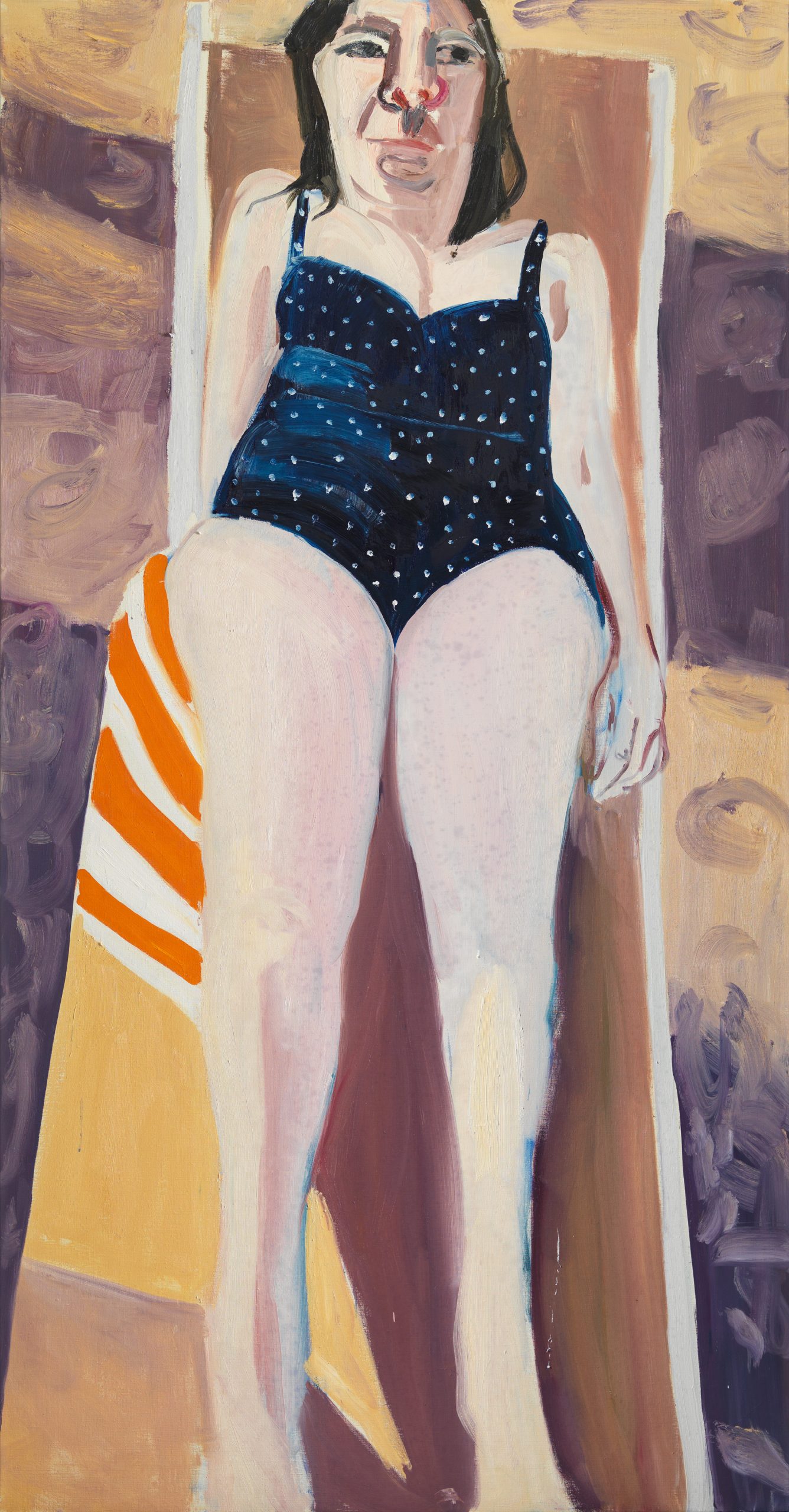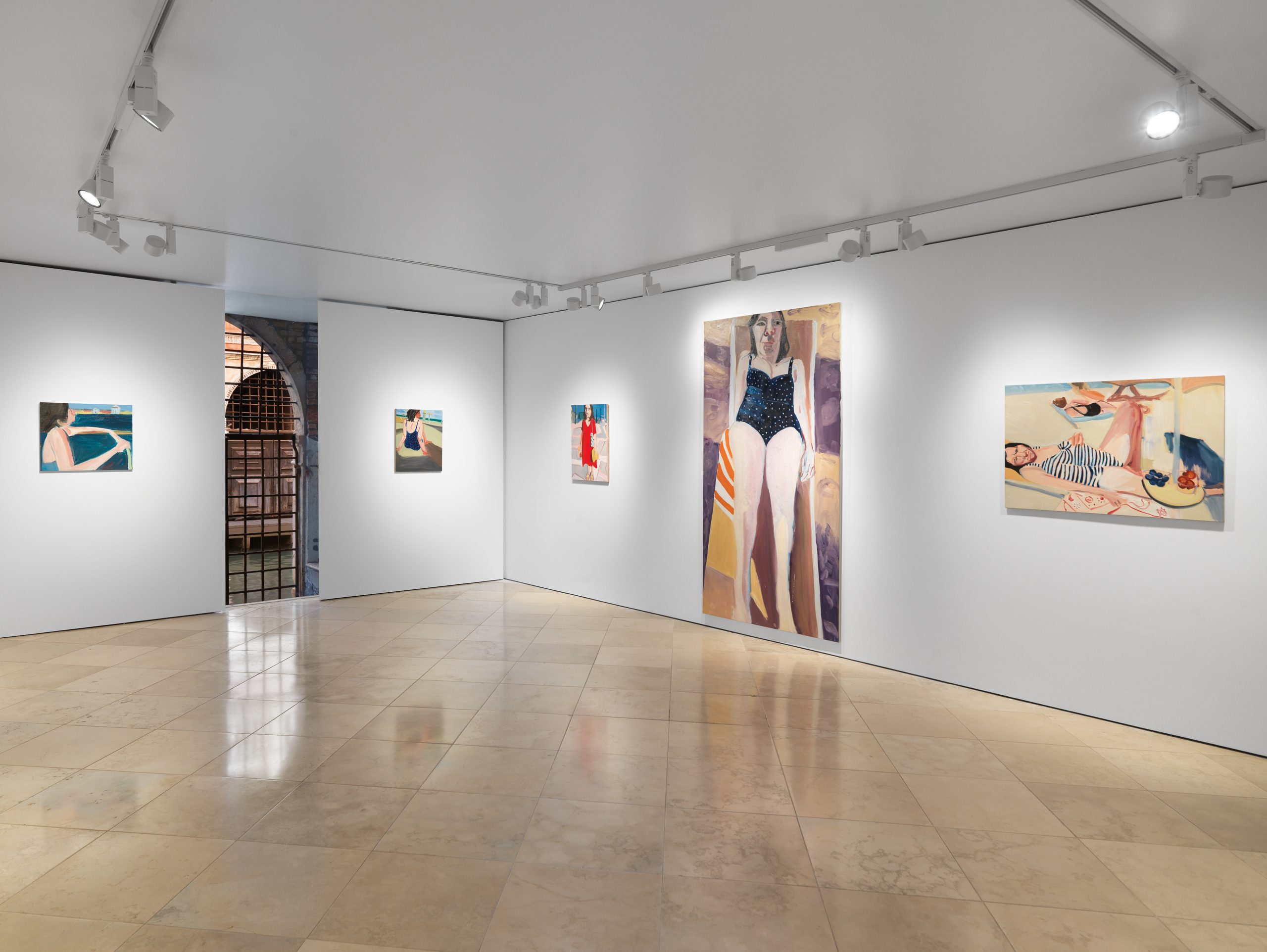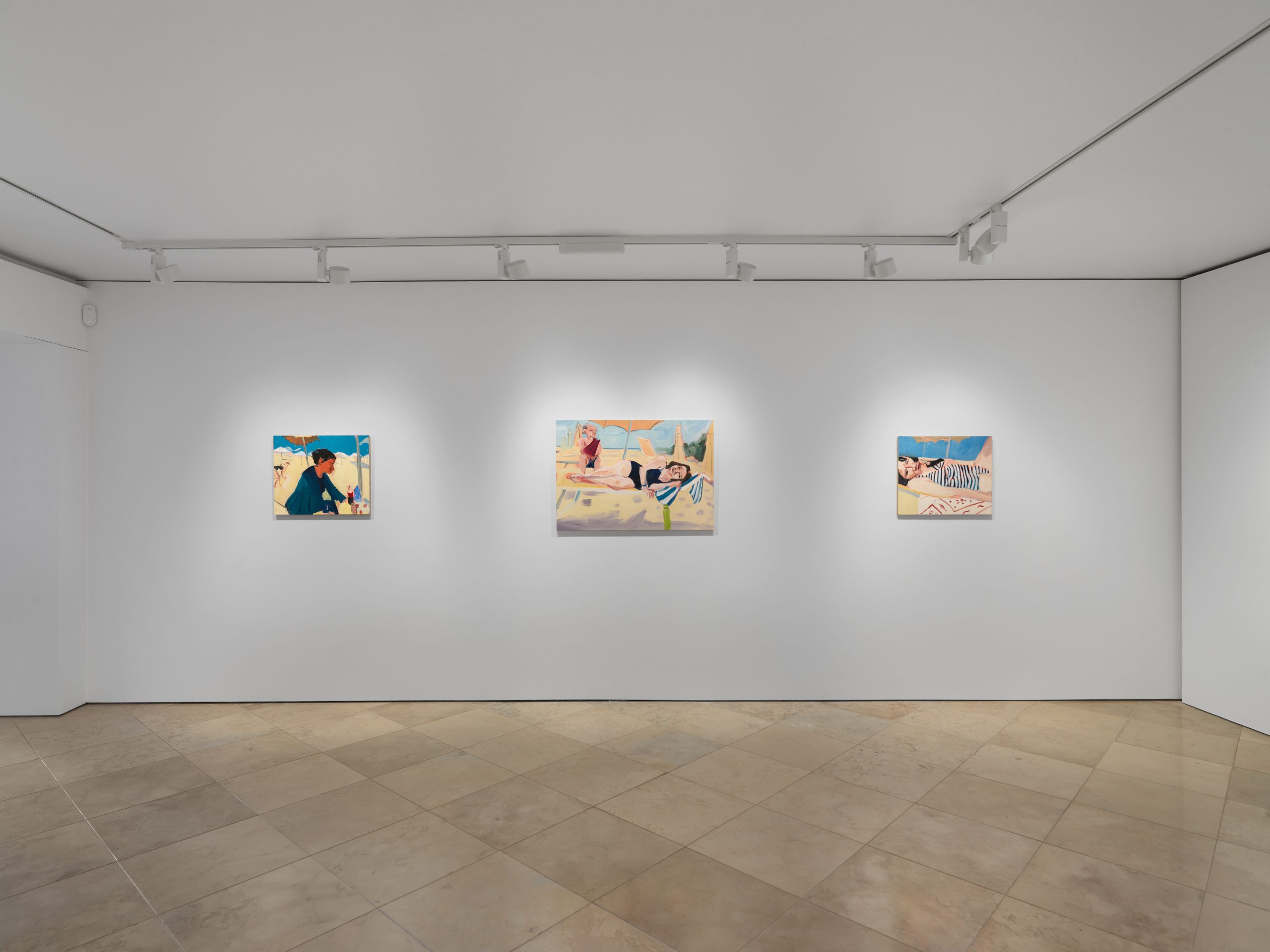
Chantal Joffe
November 2023
Painter Chantal Joffe uses quick brushstrokes to create snapshots of personal, everyday moments drawn from life experiences, photographs or magazine images. The figures in her artworks emphasise the physical process of painting and convey its emotional and psychological side. Her work demonstrates that there is no single, objective perspective; on the contrary, distortions of form and scale often make a subject more real.
We met Chantal to talk about her works on the occasion of her exhibition The Eel at Victoria Miro in Venice.
Your work has been defined as a kind of honest and brutal portraiture where the painting is like a photograph of mood. In your psychologically charged artworks of often female figures, layers of oil paint create a composite landscape of faces and bodies. Speaking about subjects you said in a conversation with Katy Hessel: “The cave painters began with themselves”, because they painted what surrounded them. I also read that you said that your paintings are “a mash-up of everything that preoccupies me”. Is that still the case? How has evolved the choice of what your eyes see and select?
It is absolutely true, I always paint what is happening at the time. When my daughter was a baby I painted her, and before that I painted myself when I was pregnant. I have tried to paint our evolving relationship, and what is happening in my family now is also a subject for my work. It is not a choice for me, it is a way of understanding what is happening in my life. There was a time when I was ill and I did a series of drawings describing what I was going through. Through art I describe what is happening, so I do not feel I have a choice, it is my way of understanding the world.
Funny Weather, the book by Olivia Laing where you are one of the characters, reports that you said that being a painter was like being a hairdresser, the models give themselves up in the hope that you will see their best part. There is an interesting reflection a few lines later when you say: “You can’t paint reality: you can only paint your own place in it, the view from your eyes as manifested by your own hands.”. How can art make us see reality differently?
That’s complicated! I think a lot about how I understand the world, you know, even looking at the same landscape two people can have very different perspectives. A friend of mine who is nearsighted saw the world a little bit differently, blurred out, it made me realise that every single person sees the world differently, we are unable to experience each other’s experiences, even though we want so much to feel each other’s feelings, because that is the definition of empathy, to see how someone else feels. The gap between how they imagine it and how it is to actually live a certain emotion or situation. When you paint someone, you are close to them, you bring your own assumptions about the other person, and yet there is a gap between how they imagine it and how you see it.
“Venice is a factory of images, a mechanism to stimulate the eye”, Olivia Laing rightly writes in the text accompanying the exhibition. You spent the summer months in Venice, an experience that changed your sense of light and colour palette, as in this new production light blue and yellow abounds. What influenced you the most during your stay?
When I arrived in Venice I was almost panicked, starting in a new city with a new studio, it was strange, the first painting was a portrait of me lying in bed in the studio weeping. But then suddenly you’re doing it, I started painting the things that are there, I started going to the Lido, the experience of the Lido informs the paintings, I sort of painted my way into Venice and everything I know about Venice, everything started coming in. It felt like an incredible gift to be there.
For this show you wanted to paint an eel, so you went to the Rialto market to buy one, but in the end it proved impossible to make it the subject of a work; so it became the title of the show and of another portrait. You do not use much symbolism in your titles or in your paintings, you are more interested in revealing truths through the expression of your subjects. What was your interest in choosing such a subject?
I was thinking of Francesca Woodman, who made a photograph of an eel when she was in Italy. I had the chance to meet Edith Schloss, who knew Francesca and had an early copy of her artist’s book Some Disordered Interior Geometries. Edith talked to me about her, so when I went to Venice I already had the idea of painting the fruit, vegetables and the still lifes of a sort, I saw the eel in the market, I decided to buy one, but I didn’t really take into account the physicality of the body, it’s a dead weight, it’s heavy, and with its tongue hanging out of its dead head. I would paint a kind of Freudian picture in every sense of the word. I have also suffered a lot of bereavement in recent years. So I could not try to paint this dead thing. So it was very disturbing. And I was alone in the studio with this eel, I was just screaming because it had fallen out of the bag into the sink in the studio. And I couldn’t bear to pick it up.
So, as you say, I’m not one for symbolism. But I had this, you know, the water is outside the studio where I paint. And you know, you have this sort of terrible feeling that you’re going to wake up as an eel. So for somebody who feels that I’m very much about the real, the metaphor kind of swallowed me up as the eel. And I had to get rid of it. And I felt guilty about the waste of life. It was a dead creature that had been alive. You know, all the things we do not want to see when we eat fish or meat. It brought all that up.
In the show there are a series of canvases of different sizes, what changes for you working on large or small formats, I have read that the larger canvases are more theatrical and the smaller ones perhaps more intimate, do you follow this “logic of sensation” or is there a different feeling behind the choice?
I think it is mostly an instinctive choice. I have always moved between big and small canvases, as you said, smaller is intimate and private and somehow containable. And then sometimes I need the scope, the ambition of a large canvas and the space of what that is mentally. I went to see the Mark Rothko show at the Fondation Vuitton in Paris and I was so struck by his series for the Four Season Restaurant, the sheer scale and the fact that your body is encompassed in those paintings. And I think, for me, that feeling of being inside the painting when you paint big, how you lose your body in the scale. The amount of paint you use to do them, and the gestures of painting: you stand up, you bend over, you use buckets. There is a literal dance with the painting. And it’s physically exciting. But it takes a lot of energy. It is like going on a journey to make these big paintings. For me the small paintings can never quite be that. I really like to do them, for example I painted my dads watch after he died and it had to be a tiny painting, but sometimes I have to do a huge painting of my partner, I painted him sleeping on a bed. So sometimes the sizes are dictated by the subject.But sometimes you want to do the opposite, I always like the idea of making a tiny thing big. But I struggle with that. Whereas a body can never be big enough for me. I start with a big canvas and then I need a bigger one!
PHOTO CREDITS
Chantal Joffe, Letto (Spiaggia), 2023, Oil on canvas. Courtesy the artist and Victoria Miro
Chantal Joffe, Lido, 2023, Oil on board. Courtesy the artist and Victoria Miro
Installation view Chantal Joffe, 5 September–21 October 2023, Victoria Miro Venice. Courtesy the artist and Victoria Miro
Installation view Chantal Joffe, 5 September–21 October 2023, Victoria Miro Venice. Courtesy the artist and Victoria Miro
Chantal Joffe portrait; ph. Isabelle Young. Courtesy the artist and Victoria Miro






























